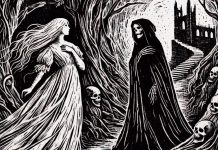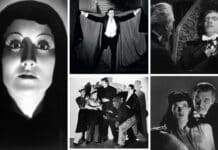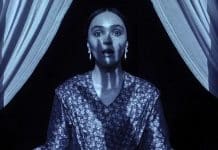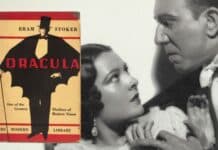Guest writer DEBRA McREYNOLDS puts the bit on our favourite vampire films in this look at cinematic Dracula
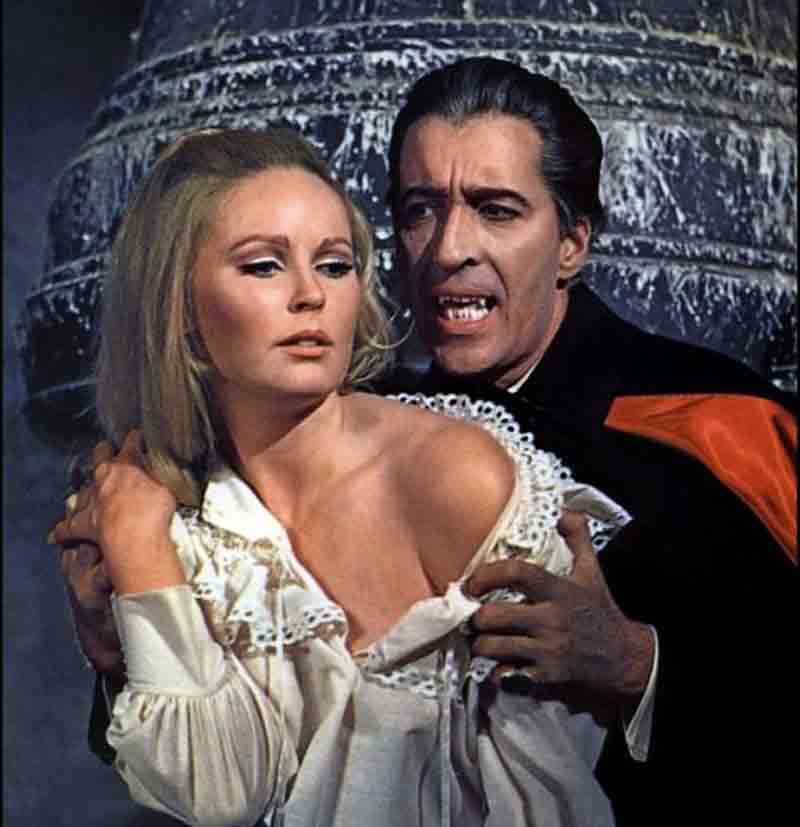
We love Dracula. Every year at Halloween we celebrate the Count in rapturously horrific ways, fangs, blood, black cape, widow’s peak, and that undead pallor.
And yet Count Dracula has become the most romantic of all the horror icons, even a sex symbol.
When Bram Stoker created the enigmatic Count, he was influenced by the romanticism of the Victorian era. His novel became both a horror story and a Gothic romance. But make no mistake: Vampires are cursed beings. Although the idealized notion of staying young forever may sound appealing to the average modern day person, these are damned souls, forced to walk the Earth alone for all of eternity. They are forced to turn into monsters and suck human blood in order to exist. So why have we imbued these monsters with passion, virility and sex appeal usually reserved for mortal men of that ilk?
The Universal Count
We must go to Hollywood where Count Dracula has come to life on the screen in various forms and versions, from the silent era to modern times. Hollywood has always been prone to romanticize just about everything, even war and death, and Count Dracula is no exception. In fact, he’s made to be a homme fatale, to be loved, idolized, hated, reviled and cursed. The 1931 Universal film Dracula drew from Stoker’s book as well as previous romantic versions of vampires.
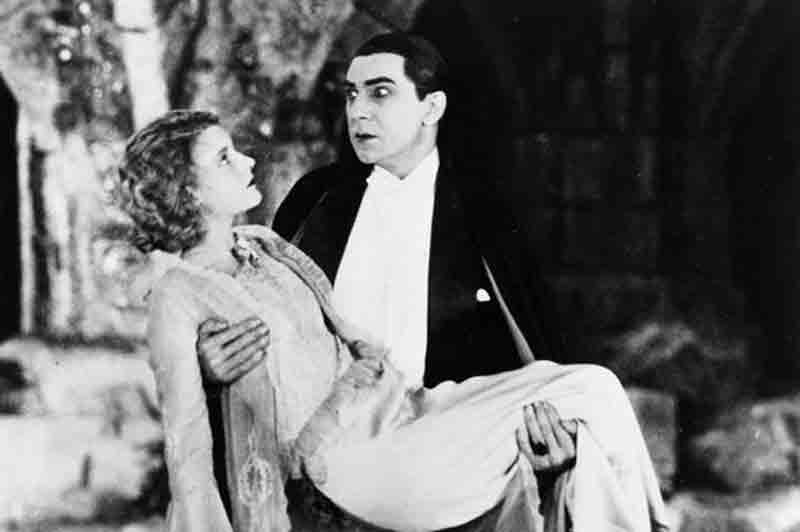
To many film historians, fans and critics alike, this version of Dracula remains the definitive saga of the Count, and Bela Lugosi the definitive Dracula. Lugosi has a powerful presence and authority, a mesmerizing figure seen as both surreal and palpably real. With the slow, deliberate pacing of his performance, he gives his Dracula the air of a walking, talking corpse but with a haunting, vulnerable, and passionate layer beneath.
When he meets Mina for the first time at the opera house, we can see that instant spark of attraction between the two. Mina is drawn to the Count’s exotic and powerful presence, and she easily falls under his spell.
Although we never see Dracula actually draw blood from Mina’s neck like the hungry, ghoulish animal he has become, the scene where he seduces her and drapes his cloak over her prone body to begin his feeding frenzy remains a seductive and erotic moment.
Tea and Fangs Anyone?
Hammer Films icon Sir Christopher Lee made his debut as the Count in Terence Fisher’s 1958 film Horror of Dracula, the first of seven Dracula vampire films made by Britain’s Hammer Films and featuring Lee. When his Count Dracula walked into a room with an air of aristocracy, “Lee cast a spell on every unfortunate soul caught within his shadowy presence—the high priest of power and despair,” writes Kalyn Corrigan in her blog: “The Definite Dracula: Christopher Lee is the Greatest Vampire of Them All.” (2017)
In her essay, Corrigan observes: “He disbanded men who challenged him with an effort that seemed like little more than a minor inconvenience, scooped up their petrified women waiting in the wings, and as the proper ladies promptly fainted, used his towering foreboding structure to carry the girls into his chamber like they were nothing more than rag dolls in his arms. His piercing gaze brought fair maidens under his thrall with a mere glance…”
When he makes his entrance from the shadows, a tall, commanding if not demanding figure, Lee sends chills up and down the spines of all women, maidens and matrons alike. In Horror of Dracula, the Count easily seduces Mina Holmwood, the wife of Arthur Holmwood whose sister Lucy just met her eternal fate via the vampire’s kiss. Although under Dracula’s evil spell, Mina Holmwood maintains a sparkle in her eyes as if she’s savoring that private moment when the Count stole her innocence.
In fact, her gaze seems to tease, entice and draw the audience into the Gothic fantasy—the strange, erotic tangle of a delicate Victorian lady with a darkly brutish and sadistic devil. Despite the fact Count Dracula perishes and is resurrected numerous times through rather incredible means in subsequent Hammer vampire films, Sir Christopher Lee maintains his handsome and aristocratic Nosferatu image.
As Corrigan suggests: “Each moment he was onscreen was mesmerizing; a powerful domineering stance that demanded attention when he sauntered into a the room, a flicker of intoxicating cursed madness that glimmered out from behind the eye that captivated and kept its audience under his thrall.”
The Black Drac Vampire Film Experience
The vampire film Blacula came to the screen in 1972, one of the first “Blaxploitation” films produced for American International Pictures, this one a modern take on the vampire tale.
William Marshall plays the title role, a handsome, aristocratic African prince named Mamuwalde, who is turned into a vampire by Count Dracula at the Transylvanian castle after the Count refuses to stop the enslavement of Prince Mamuwalde’s people in the year 1780. Locked in a coffin for centuries, Blacula is set free when two interior decorators buy the original count’s possessions and bring them to Los Angeles.
After sucking his way through a few LA bystanders, Blacula meets Tina, a young woman who is the spitting image of his dead wife Luva (buried alive in the castle by the evil Count Dracula).
At a discotheque, Blacula introduces himself to Tina as Mamuwalde, and she immediately becomes intrigued with the tall, elegant man in the black cape, whose deep, sonorous and cultured voice captivates her. Despite his mysterious background and even more mysterious ways, Tina invites Mamuwalde to her apartment and allows him to make love to her.
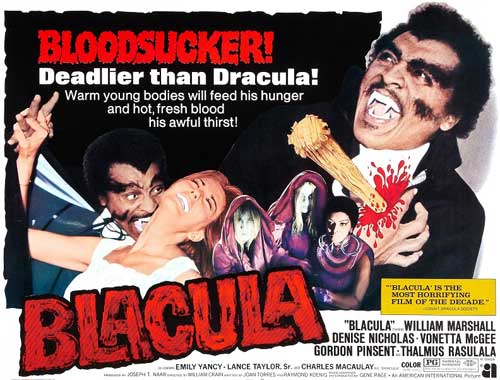
In previous vampire films, Dracula’s transformation from dapper nobleman to evil monster was achieved through facial expressions and the use of shadows, the effect utilized expertly by Lugosi and Lee. But with Blacula, the prince’s demonic look comes courtesy of the makeup department, his face transformed via thick sideburns, arched eyebrows, sunken cheeks and long, sharp fangs. By the time Tina learns of Mamuwalde’s fate, she has already fallen in love with him and is prepared to join him in life everlasting. Not too bad for a guy who, when aroused by blood lust and sexual passion, looks a bit like a cross between a punk rocker and a werewolf!
The Romance of the Vampire
Yet another reboot of Dracula in 1979 included the tagline“A Love Story,” played as a romantic version that attempts to humanize the vampire and showcase him in a new light—that of the passionate lover. Frank Langella played the lead, imbuing his Dracula with a handsome elegance, a debonair and urbane style befitting a nobleman in a black satin cape. His sexy, smoldering eyes certainly melted the hearts of Lucy Seward and Mina Van Helsing (their roles reversed and names changed), if not their will powers.
According to Langella in a 2017 interview, he wanted to explore sides of the character which weren’t shown before: “I decided he was a highly vulnerable and erotic man, not cool and detached and with no sense of humor or humanity. I didn’t want him to appear stilted, stentorian or authoritarian as he’s often presented. I wanted to show a man who, while evil, was lonely and could fall in love.”
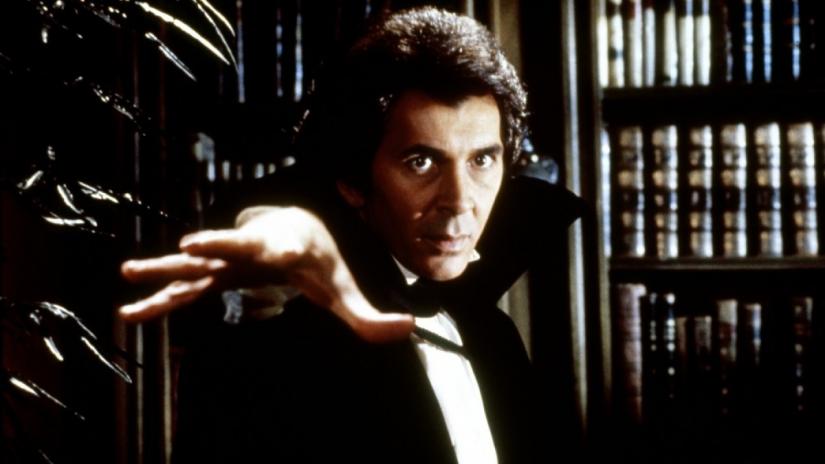
Langella also understood that the attraction that the character produced among women became the key to realizing his enormous power of seduction. Over a candlelit dinner with Miss Lucy, Count Dracula rhapsodizes about immortality in his suave, elegant voice as if he could easily coax moonlight into champagne. The scene when he finally wins over Lucy, seduces her, and drinks her blood becomes an erotic ebb and flow of bodies, shadowed, writhing figures bathed in red hues of their life force.
“Dracula as a character is very erotic,” Langella opined. “A woman can be totally passive with Dracula; ‘he made me drink, I couldn’t help it.’ …Dracula seems to represent a kind of doorway to sexual abandonment not possible with a mere mortal. Besides, he’s offering immortality. Actually, I can’t think of a woman who wouldn’t like to be taken if it’s with love. If you take a woman by force and at the same time gently, you can’t fail.”
And what woman could resist such a temptation—a tall, handsome, elegant man of nobility, a fantastic lover who is really a loner in need of love—the fact that he’s one of the undead is not necessarily a stumbling block to a lasting relationship.
Sexy Vlad
And that brings us to Francis Ford Coppola’s 1992 vampire film, Bram Stoker’s Dracula, a fascinating tale that jettisons the Gothic look and extols an exotic approach peppered with Eastern European and Byzantium folklore and mysticism. Coppola closely followed the Stoker narrative even though the movie gets bogged down at times in literary interpretation and the Victorian zeitgeist.
Despite his various changes into monstrous forms, Dracula is still played as a seducer and even a sympathetic man, once a Christian warrior betrayed by God and who is now doomed to walk the earth while waiting out the ages for his lost love to be returned to him.
Traveling from his eerie, mist-shrouded castle, Dracula trades his beloved Transylvania for the hustle and bustle of Nineteenth Century London. Here he pursues Mina Murray, who looks exactly like his lost love Elisabeta. Forget that Mina is engaged to Jonathan Harker. Where a vampire is concerned, mortal betrothals are meant to be broken.
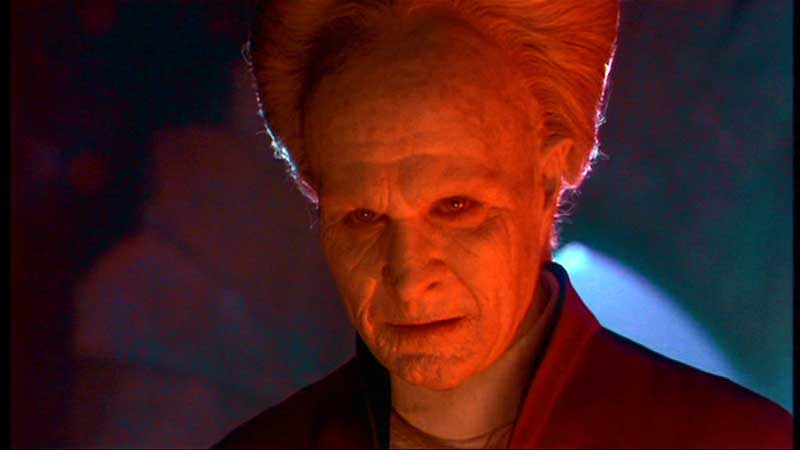
The count introduces himself to Mina as Prince Vlad, and soon she becomes intrigued with the nobleman’s enigmatic and compelling charms, calling him her strange friend. In this interpretation, Dracula relies more on magic than on any physical and romantic prowess to seduce Mina. Once he makes her his supplicant, she willingly submits to his physical embraces and kisses. It is only when the count reveals his true self and admits to murdering her dear friend Lucy that Mina feels pangs of revulsion and lashes out.
Yet the deep stirrings inside of her, the rekindled passions of the dead Elisbeta, becomes too strong for her to ignore and she begs him to make her his immortal bride. But in the end, Dracula realizes he cannot subject Mina to an eternal life of hunger, and begs her to free him from his self-induced prison of evil and damnation.
According to Director Coppola, he was attracted to the sensual elements of Stoker’s tale and wanted portions of the vampire film to resemble “an erotic dream.” In a 2018 interview, Gary Oldman, who plays the Count, said he loved the line: “I have crossed oceans of time to find you.” And: “You have to love someone that much to say a line like that.”
Necks Eternal
In other vampire films, Dracula has been portrayed as a comedic ladies’ man in the spoof, Dracula Dead and Loving It; a rapacious, disfigured creature in Nosferatu, the Vampyre; and even a salacious blood-starved dandy in the X-rated Blood of Dracula (formally Andy Warhol’s Dracula.) So it seems that whatever our tastes, there is always a Count to please.
Perhaps the film critic Roger Ebert said it best: “Many women are flattered when a man says he has waiting all of his life for them. But if he has been waiting four centuries?” Hum, ladies…better do some fact-checking first before you make that “forever” commitment—you never know how many other females he’s “fed” that line to in the last century!
DEBRA McREYNOLDS lives in El Paso, Texas, and writes mysteries, horror and romance ebooks under the pen name of Marva Dale. She is the author of the Death by the Decade Series—mystery thrillers focused on each decade from the 1920s to the present. For more information, visit her website marvadalebooks7.webnode.com


